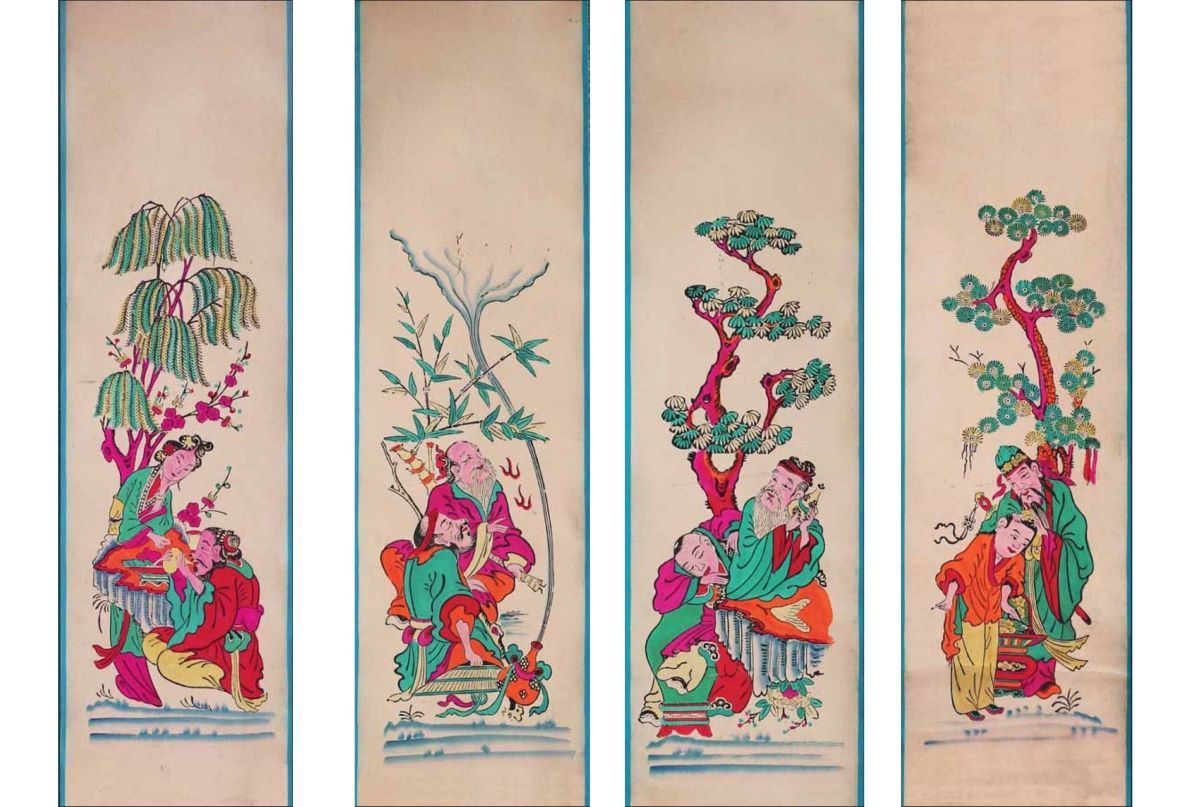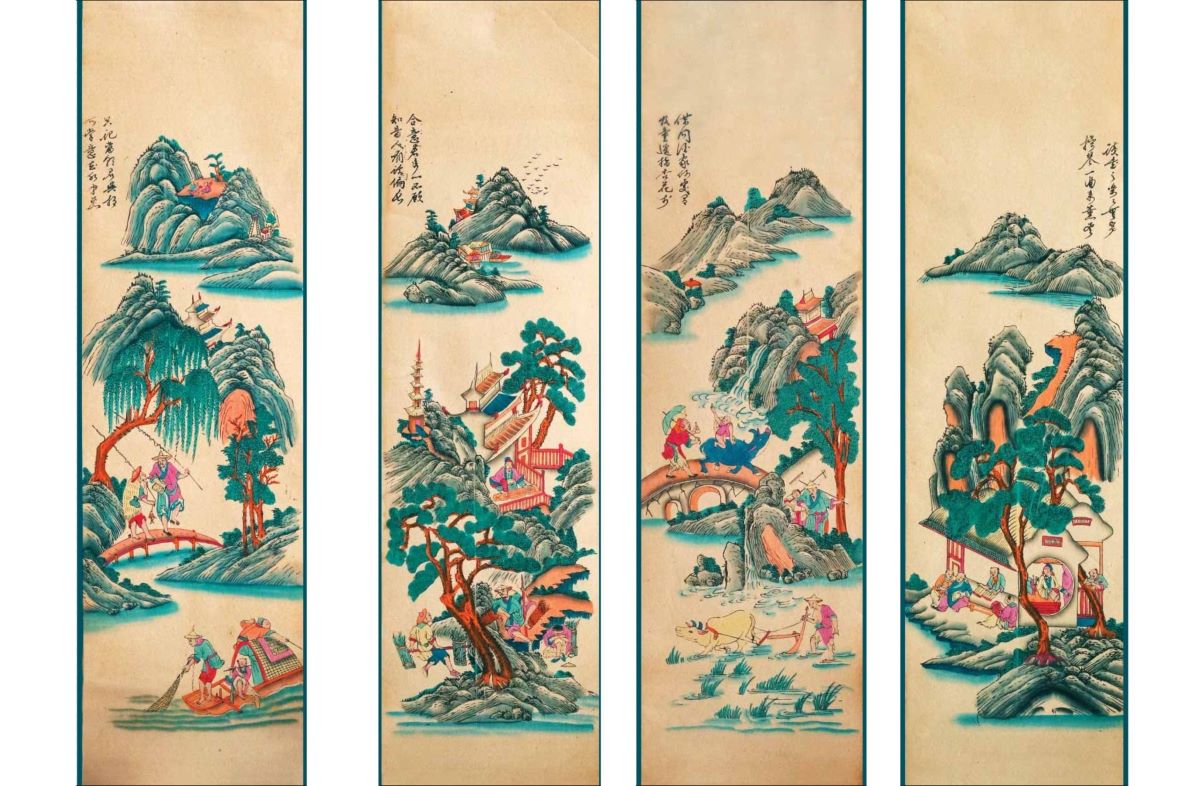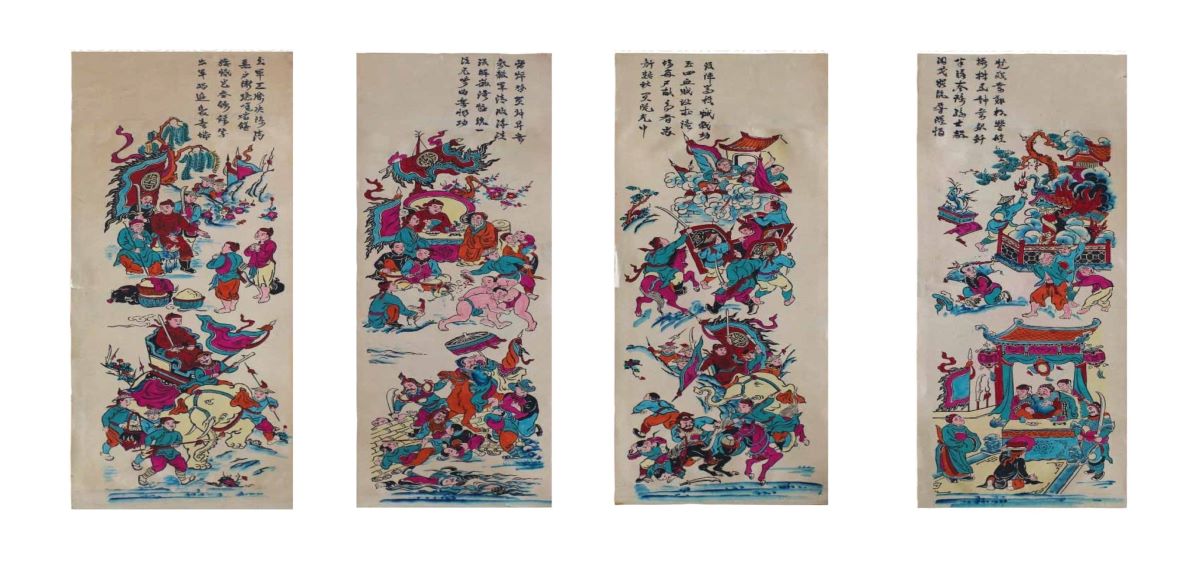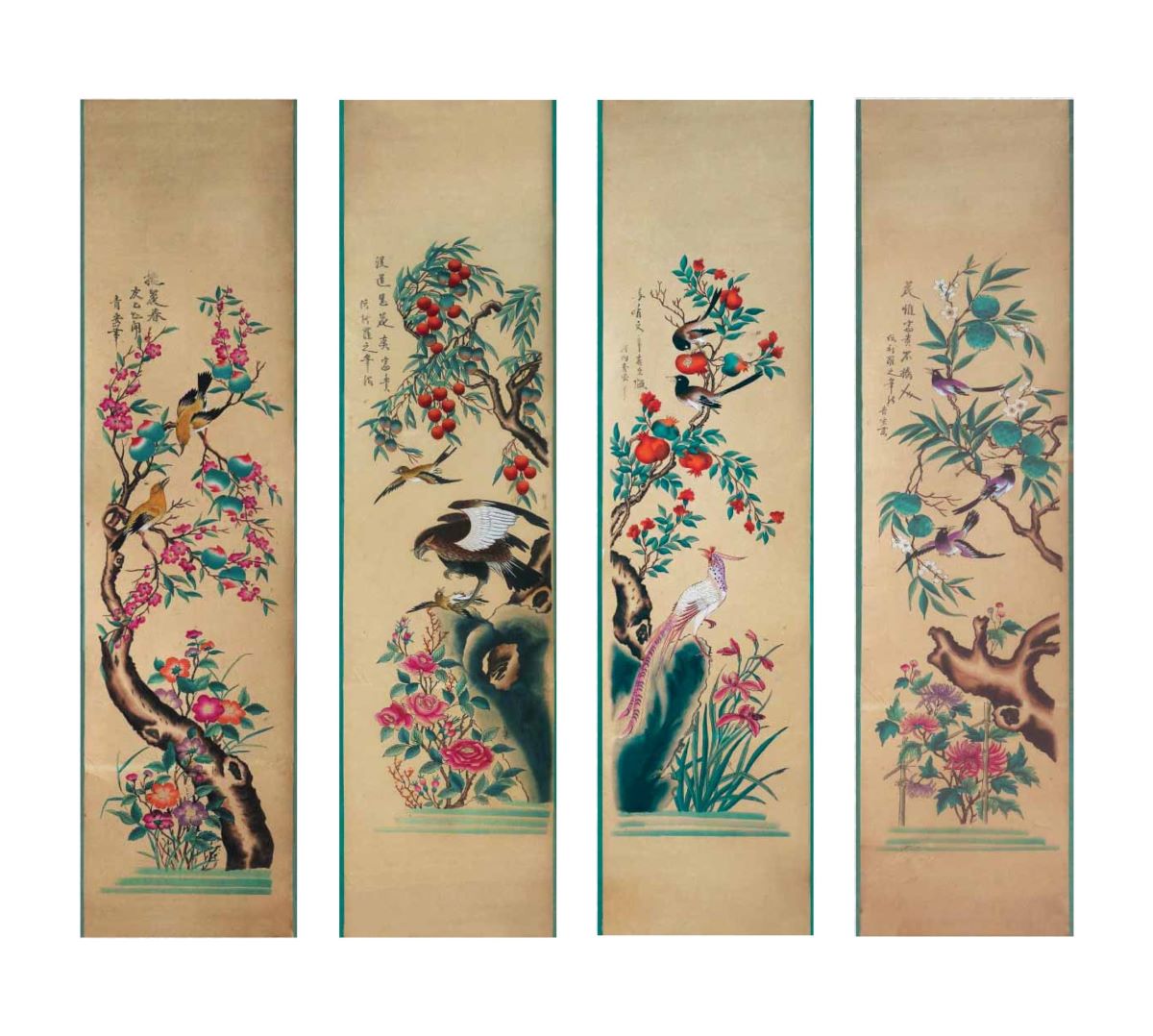The Spring portrays on “Tu Binh” folk paintings
Art-lovers may immerse themselves in the vivid folk paintings that are on display at an exhibition in Hanoi.
The art exhibition entitled “The Colour of Spring on Tu Binh Folk Painting” featuring Hang Trong folk paintings will last until February 28 at the Vietnam Fine Arts Museum.
| Visitors to the ongoing exhibition at the Vietnam Fine Arts Museum will also have a chance to practice Hang Trong folk painting printing. Photo: Vi Viet Nga |
The display is open to the public on the occasion of the upcoming traditional Vietnamese Lunar New Year as well as to celebrate the founding anniversary of the Communist Party of Vietnam (February 3, 1930 - February 3, 2022).
The gorgeous type of folk art
The Tu Binh is a line of Hang Trong folk paintings, which dates back to the 16th century. It is a set of four paintings, portraying the rotation of things in the universe according to the Asian concept, such as the four seasons of the year, the four stages of life, four anecdotes in a story; the beauty of the girls playing four different musical instruments, four precious kinds of flowers, among others.
Each of these paintings has vivid colors that reflect the beauty and rich culture of the community where they are originated. In the folk paintings, there are always Nom writings showing people’s wishes for a happier, healthier, and wealthier life.
Depending on the meaning, Tu Binh painting sets may be displayed on the altar, in front of the house, or in the courtyard of an ancient Vietnamese home. At certain times of the year- particularly Tet, the Lunar New Year, they are considered an indispensable element of the occasion.
“The Colour of Spring on Tu Binh Folk Painting” exhibition features 20 sets of Tu Binh folk paintings themed the Tu quy (Four seasons of the year), To nu (Four female musicians), the Tu dan (Four important careers of the human, including Fishing, Woodcutting, Farming, Teaching), among others.
“The collection is a precious treasure that has been preserved by the Vietnam Fine Arts Museum through decades,” according to a representative of the museum.
| The To nu painting depicts four graceful girls playing four different types of musical instruments. Photo courtesy of Vietnam Museum of Fine Art |
“I’m so impressed with the Tu quy depicting pine, bamboo, chrysanthemum, and apricot, the four specious kinds of trees and flowers representing the four seasons in the northern part of Vietnam,” said Huong Nguyen, a visitor from Hanoi.
Visiting the Vietnam Fine Arts Museum, many people are impressed with beautiful Hang Trong paintings for not only the harmony of color but also the sophistication in each detail.
“These paintings are gorgeous. The colors are extremely harmonized while each of the detail in the drawings is magnificent,” she added.
A Hanoi's truly legacy
Hang Trong folk print - a combination of traditional cultural values with ancient artistic methods contributed to the development of the folk painting craft, making it flourish once upon a time.
The craftsman uses the wood carving technique to print colorful inks on do paper. In making a painting, they start with woodblocks to print black outlines, then draw the details and finally color the picture in by hand.
Before the 1970s, Hang Trong prints were on sale all over Hanoi three weeks before Tet. The paintings were once very popular among Vietnamese and displayed for sale on the ancient streets of Hang Trong, Hang Non, or Hang Quat in Hanoi’s Old Quarter area.
The paintings are deeply rooted in the soul of Hanoian and keep their unchanging features in spite of the upheavals of the times.
However, the craft is now at risk of falling into oblivion as only the family of artisan Le Dinh Nghien still practices it. Thus, the "The Colour of Spring on Tu Binh Folk Painting” exhibition would raise a voice calling for awareness among the public in preserving the legacy of Hanoians in particular and Vietnamese in general.
| The Bat Tien print depicts four pleasures in the life of humans. |
| The Tu dan depicts four important careers of the human, including Fishing, Woodcutting, Farming and Teaching |
| A historical set themed Tu Binh folk prints |
| The Tu quy depicts pine, bamboo, chrysanthemum, and apricot, the four specious kinds of trees and flowers representing the four seasons. |

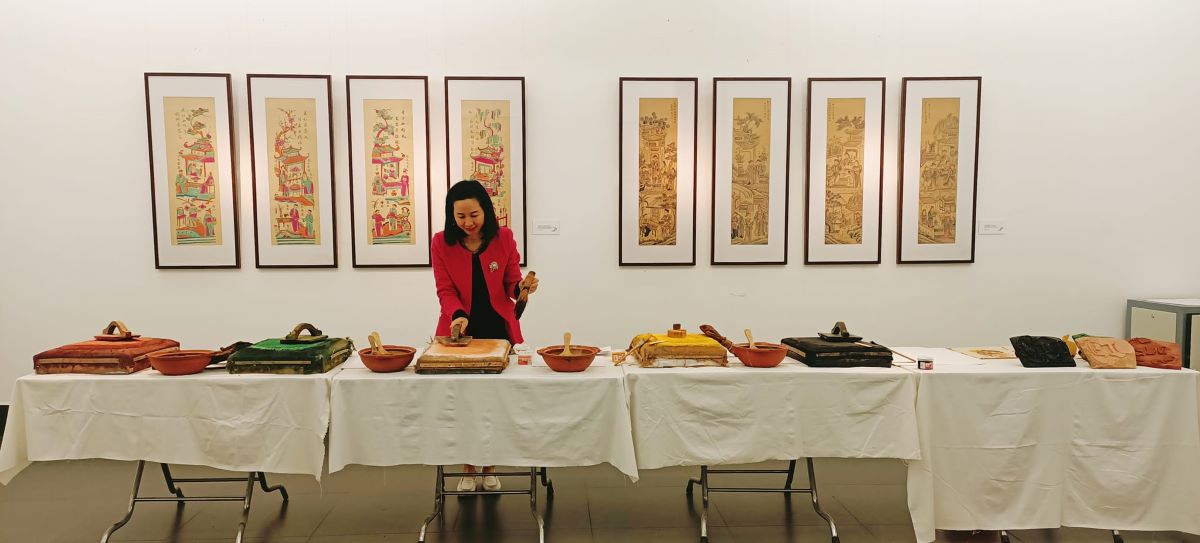
.jpg)
